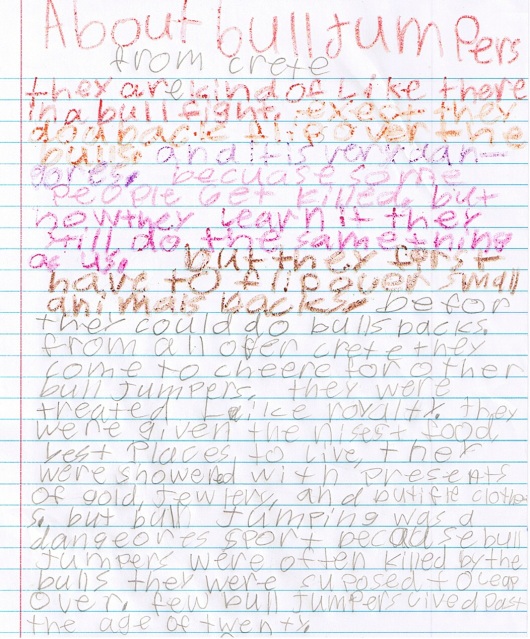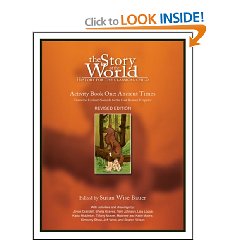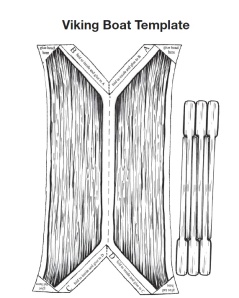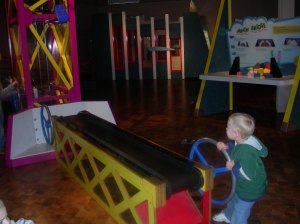I’ve always wanted an organized school room like this or this. But let’s face it–all those plastic bins and synthetic materials are NOT earth-friendly, and definitely NOT conducive to the cozy, organic learning atmosphere that I’m trying to build.
Here’s a snapshot of the two spaces we use most in our homeschool.
First, the homeschool corner of my kitchen, where I keep the school books we use most often:
 Note the earthy, non-plastic feel of this room, thanks to all-natural materials. Stays organized, too, thanks to the woven baskets and cupboard doors, which hide the messier stuff (pens, pencils, crayons, scissors, glue, etc).
Note the earthy, non-plastic feel of this room, thanks to all-natural materials. Stays organized, too, thanks to the woven baskets and cupboard doors, which hide the messier stuff (pens, pencils, crayons, scissors, glue, etc).
Here is our family room, where a system of wooden built-ins serves as our “library.” I keep all of our “messier” stuff (coloring books, puzzles, games, flashcards, etc) behind those small doors underneath the shelves, to help keep that “messy” schoolroom look to a minimum:
Then I leave the rest of the room open (no coffee tables) and full of comfy furniture to make it an inviting place to curl up with a book. Interestingly enough, companies like Barnes & Noble also offer cozy chairs and sofas in their stores.
Why?
Because when people are comfortable, they’re more likely to read! In other words: cold, plastic-and-metal decor doesn’t sell books (and it won’t sell your kids on reading them, either).
Organized School Room Hall of Fame:
(note: some of these use plastics, but I like to envision them with earth-friendly containers, instead!)
The classiest homeschool room: http://theprettyneatcompany.blogspot.com/2009/10/home-school-room.html
Most fashionable school room: http://lifeoncountyroad39.blogspot.com/2009/07/homeschool-room-ideas.html
Most innovative locale (the loft!): http://satorismiles.com/homeschool-room-photos/learning-loft/
Best homeschool room for online learners: http://www.mingleovermocha.com/2009/06/our-homeschool-room.html
Best use of a small space: http://unclutterer.com/2009/08/14/workspace-of-the-week-home-school-room/
Best use of an old entertainment center (recycling!): http://www.homeschoolblogger.com/Tiany/115667/
Best mom’s room/kids’ room combo: http://allistamps.blogspot.com/2009/06/my-new-stamp-roomhomeschool-room.html
GRAND PRIZE WINNER–THE PRETTIEST, COZIEST, MOST FUNCTIONAL, BEST-EVER HOMESCHOOL ROOM OF *ALL TIME:
http://satorismiles.com/2009/07/20/library-reading-room/
____________________________
*Second runner-up: http://mommymattersblog.com/2009/07/designing-homeschool-classroom.html



















